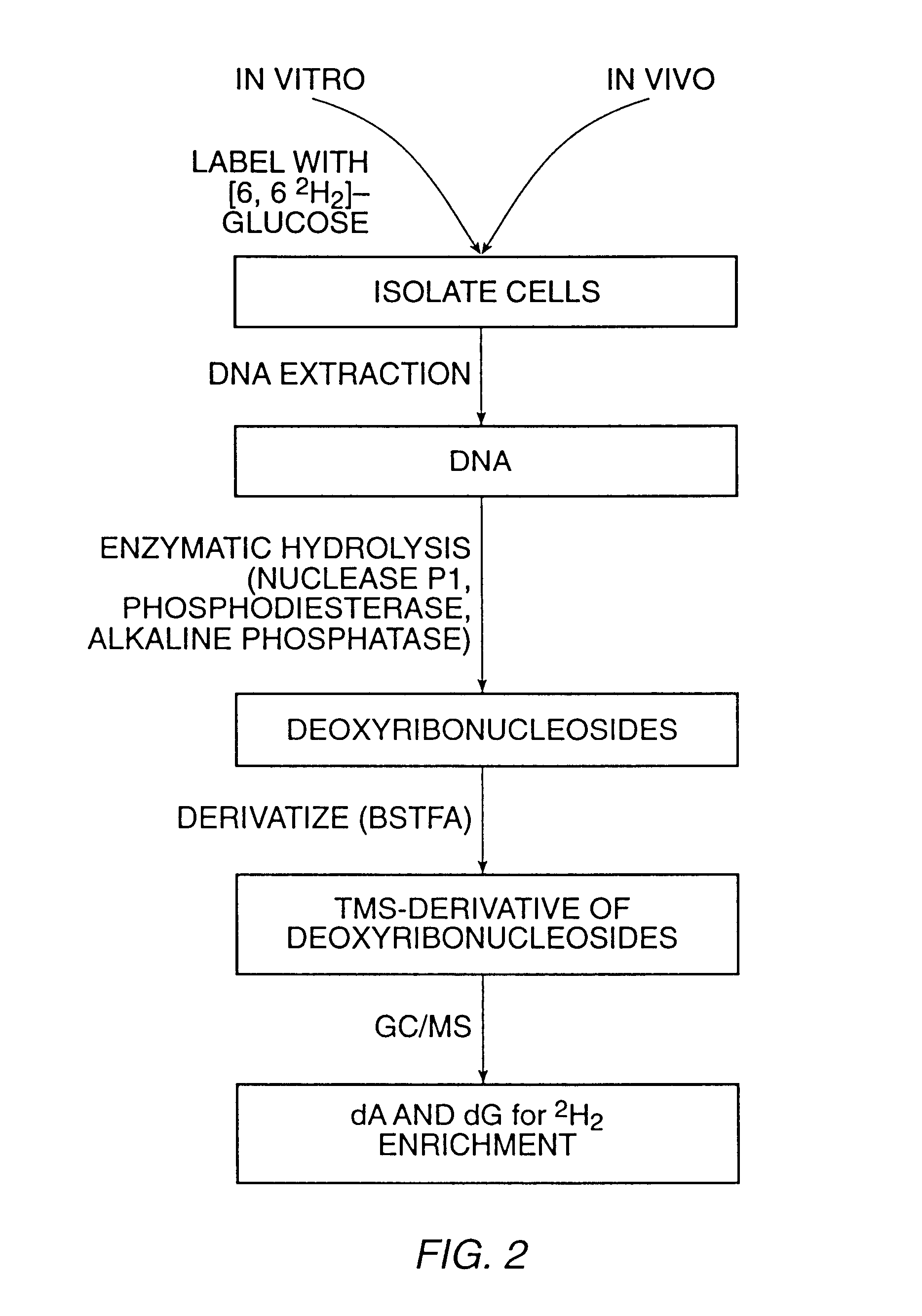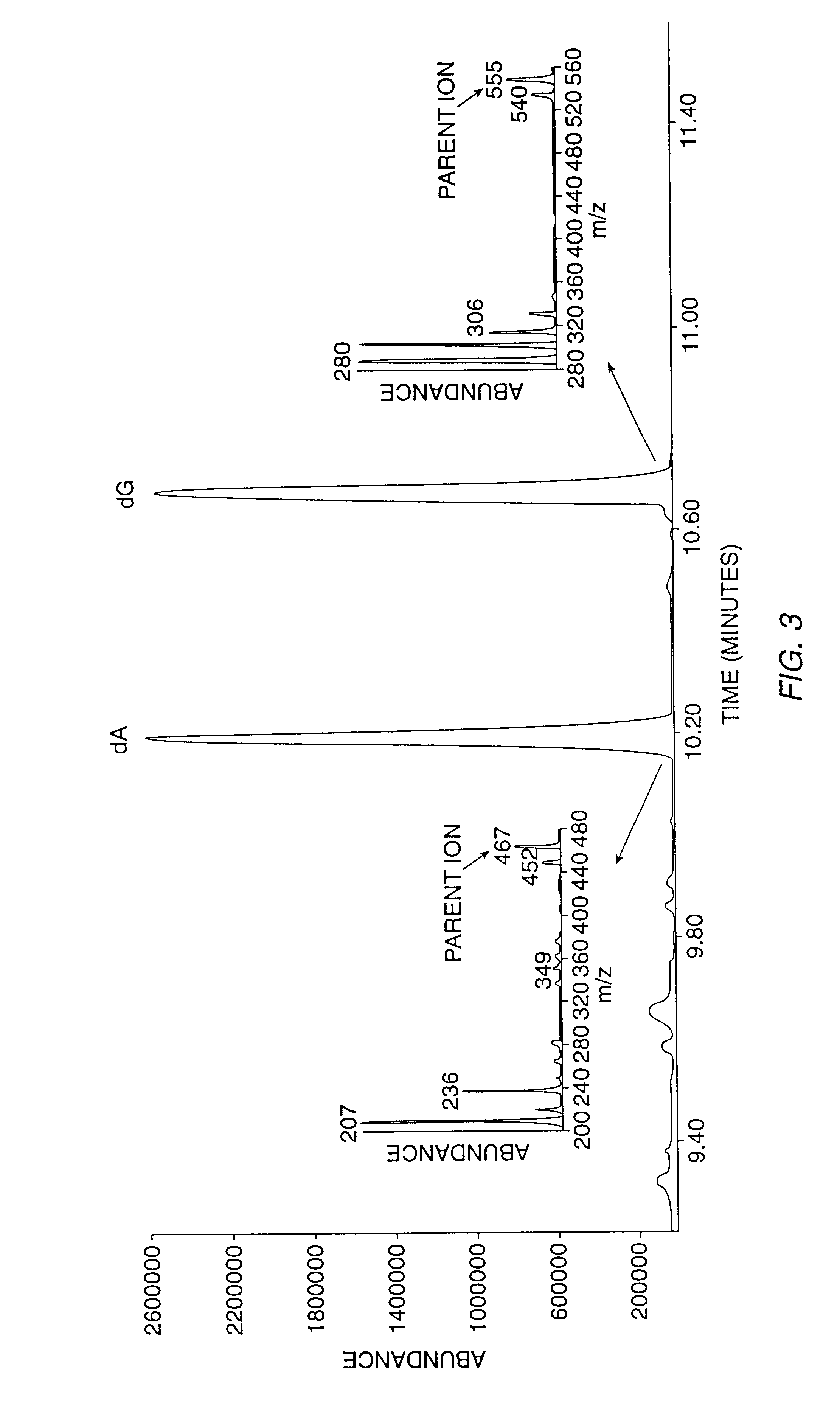Methods for measuring cellular proliferation and destruction rates in vitro and in vivo
a technology applied in the field of cell proliferation and destruction rate measurement, can solve the problems of inability to distinguish, inability to definitively measure, and limited human application of indirect techniques, and achieve the effect of being easily detectabl
- Summary
- Abstract
- Description
- Claims
- Application Information
AI Technical Summary
Benefits of technology
Problems solved by technology
Method used
Image
Examples
Embodiment Construction
The biochemical correlate of new cell production is DNA synthesis. DNA synthesis is also relatively specific for cell division because "unscheduled" DNA synthesis is quantitatively minor (Sawada et al., 1995, Mutat. Res. 344:109-116). Therefore, measurement of new DNA synthesis is essentially synonymous with measurement of cell proliferation.
In one aspect of the invention, methods for measuring the rates of cellular proliferation and / or cellular destruction are provided. Such methods comprise contacting a cell with a detectable amount of a stable isotope label which is incorporated into DNA via the de novo nucleotide synthesis pathway and detecting the label incorporated into the DNA. As is understood by those of ordinary skill in the art, a stable isotope label is a non-radioactive isotope label. A radioactive isotope label is a label comprising a radio-isotope. A radio-isotope is an isotopic form of an element (either natural or artificial) that exhibits radioactivity--the propert...
PUM
| Property | Measurement | Unit |
|---|---|---|
| flow rate | aaaaa | aaaaa |
| temperature | aaaaa | aaaaa |
| temperature | aaaaa | aaaaa |
Abstract
Description
Claims
Application Information
 Login to View More
Login to View More - R&D
- Intellectual Property
- Life Sciences
- Materials
- Tech Scout
- Unparalleled Data Quality
- Higher Quality Content
- 60% Fewer Hallucinations
Browse by: Latest US Patents, China's latest patents, Technical Efficacy Thesaurus, Application Domain, Technology Topic, Popular Technical Reports.
© 2025 PatSnap. All rights reserved.Legal|Privacy policy|Modern Slavery Act Transparency Statement|Sitemap|About US| Contact US: help@patsnap.com



